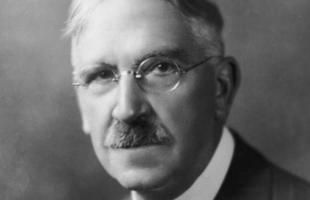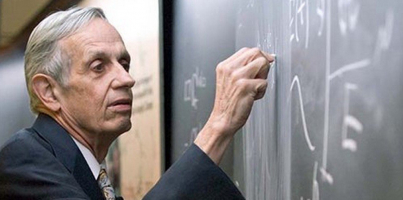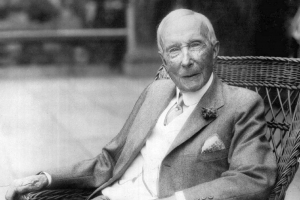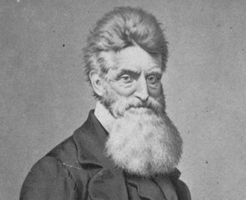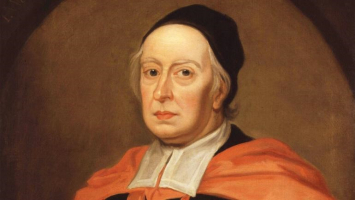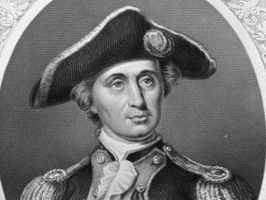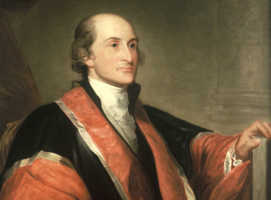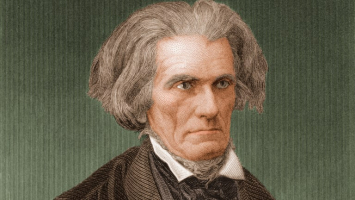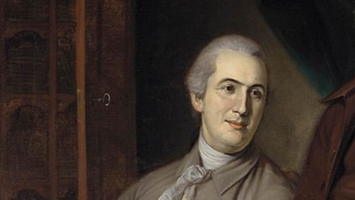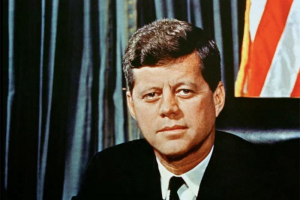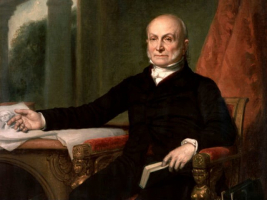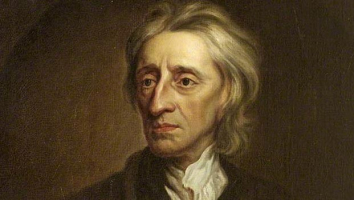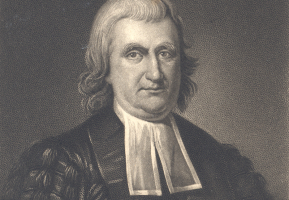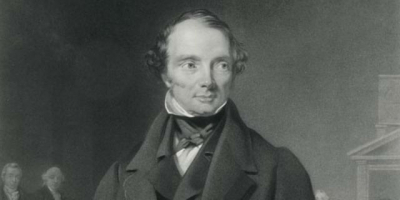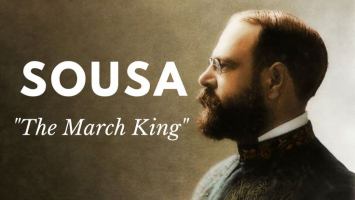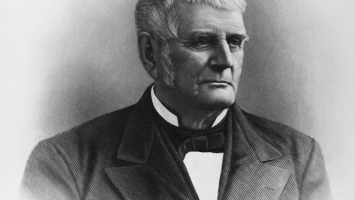Top 5 Interesting Facts about John Calvin
During the Protestant Reformation, John Calvin (10 July 1509 - 27 May 1564) was a French theologian, preacher, and reformer in Geneva. He was a key figure in ... read more...the creation of the Christian theological system known as Calvinism. Various Congregational, Reformed, and Presbyterian churches have proliferated throughout the world, with Calvin serving as the primary expositor of their beliefs. Here are the 5 interesting facts about John Calvin.
-
One of the interesting facts about John Calvin is that he is a notable alumnus of the University of Orléans. On July 10, 1509, John Calvin was born as Jehan Cauvin in Noyon, Picardy, a province of the Kingdom of France. He was the second of three sons to survive childhood. Jeanne le Franc, his mother, was the daughter of a Cambrai innkeeper. She died of an unknown cause when Calvin was a child, after having given birth to four more children. Gérard Cauvin, Calvin's father, was a successful cathedral notary and registrar to the ecclesiastical court. Gérard wanted his three sons (Charles, Jean, and Antoine) to become priests.
Calvin was a particularly bright young man. By the age of 12, he had been hired as a clerk by the bishop and had received the tonsure, which involved cutting his hair to symbolize his devotion to the Church. He also gained the support of the Montmors, a powerful family. Calvin was able to attend the Collège de la Marche in Paris thanks to their assistance, where he learned Latin from one of the school's greatest teachers, Mathurin Cordier. After finishing the course, he enrolled as a philosophy student at the Collège de Montaigu.
Gérard withdrew his son from the Collège de Montaigu in 1525 or 1526 and enrolled him in the University of Orléans to study law. Gérard believed that Calvin would make more money as a lawyer than as a priest, according to contemporary biographers Theodore Beza and Nicolas Colladon. Calvin enrolled at the University of Bourges in 1529 after a few years of quiet study. Andreas Alciati, a humanist lawyer, piqued his interest. Humanism was an intellectual movement in Europe that emphasized classical studies. Calvin learned Koine Greek during his 18-month stay in Bourges, which was necessary for studying the New Testament.
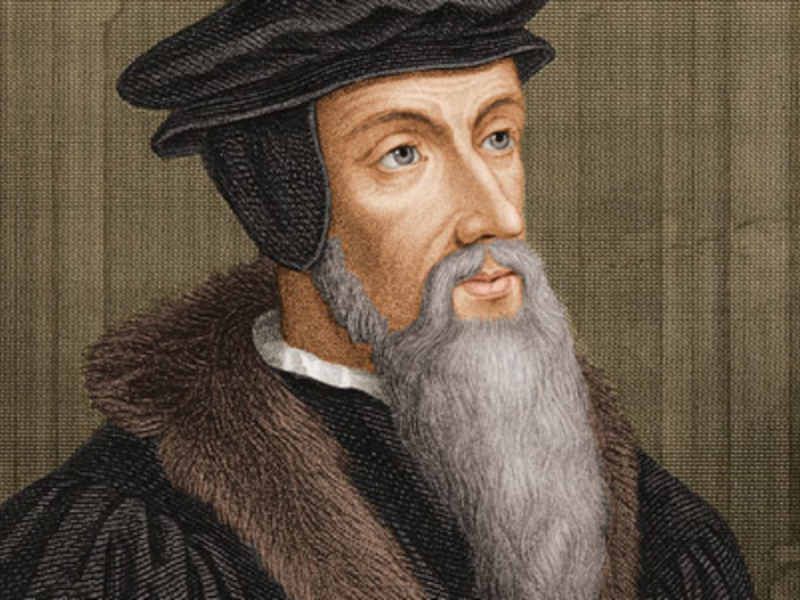
biography.com 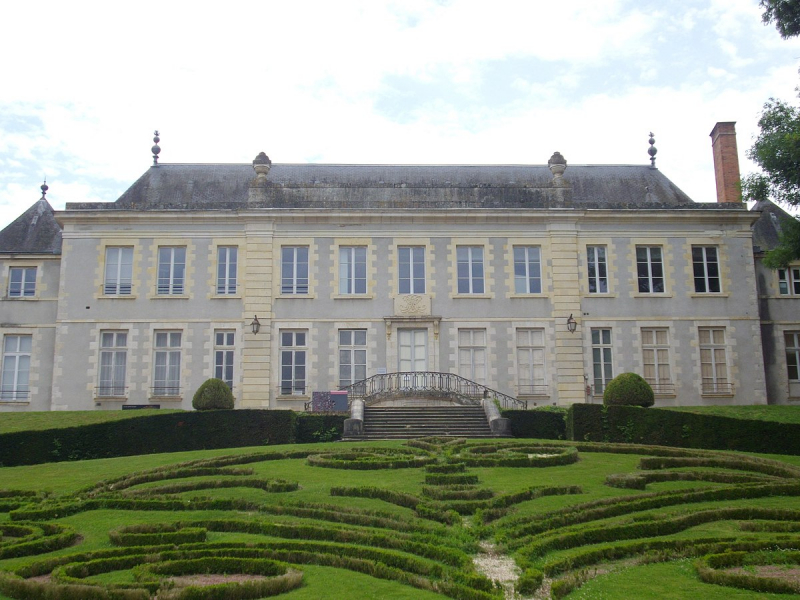
University of Orléans -Photo: wikidata.org -
It is a fact that John Calvin worked till he died. Calvin felt unwell with a fever in late 1558. He forced himself to work because he was terrified he might die before finishing the final version of the Institutes. Calvin referred to the final edition as a new work because it had been significantly expanded. The increase from 21 to 80 chapters in the previous version was due to a more in-depth analysis of existing content rather than the addition of new topics. Shortly after his recovery, he strained his voice while preaching, resulting in a strong coughing spell. He ruptured a blood vessel in his lungs, and his health rapidly deteriorated. On February 6, 1564, he delivered his final sermon in St. Pierre.
On April 25, he made his will, leaving minor sums to his family and the collège. A few days later, the church's ministers paid him a visit, and he said his final farewell, which was documented in Discours d'adieu aux ministres. He recalled his life in Geneva, often bitterly recalling some of the trials he had endured. Calvin died on May 27, 1564, at the age of 54. His body was initially laid in state, but because so many people came to see it, the reformers were fearful of being accused of promoting a new saint's cult. He was buried the next day in an unmarked grave in the Cimetière des Rois. The exact site of Calvin's grave is unknown; a stone was erected in the nineteenth century to identify a grave supposed to be Calvin's.
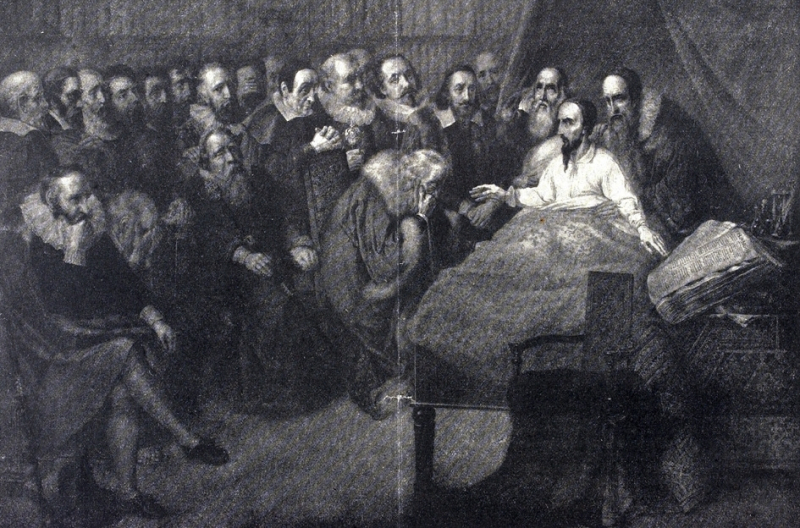
John Calvin's death -Photo: commons.wikimedia.org 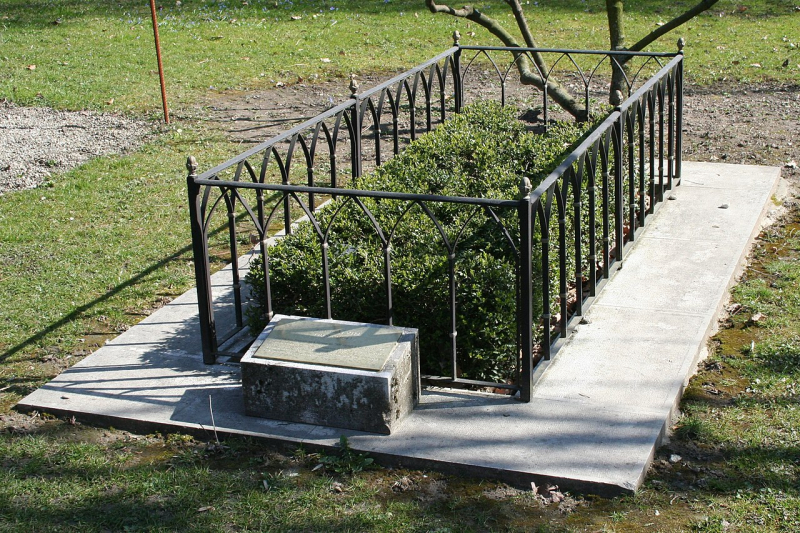
John Calvin's supposed grave -Photo: vi.m.wikipedia.org -
One of the interesting facts about John Calvin is that he was charged with the crime and had to go into hiding for a year. Calvin had acquired his licentiate in law by 1532 and had published his first book, a commentary on Seneca's De Clementia. Calvin returned to Paris in October 1533 after brief visits to Orléans and his homeland of Noyon. During this period, tensions between humanists/reformers and conservative senior faculty members increased at the Collège Royal (later to become the Collège de France). Nicolas Cop, one of the reformers, was the university's rector. On November 1, 1533, he delivered his inaugural address, which was devoted to the need for reform and renewal in the Roman Catholic Church. The faculty reacted angrily to Cop's speech, branding it heretical, and forced him to escape to Basel.
Calvin, Cop's close friend, was charged with the crime and had to go into hiding for a year. He remained on the move, taking refuge with his friend Louis du Tillet in Angoulême and in Noyon and Orléans. During the Placards Affair in mid-October 1534, he was finally forced to quit France. In that episode, unknown reformers distributed banners in numerous towns denouncing the Roman Catholic mass, to which Roman Catholic adherents retaliated with violence against the would-be Reformers and their sympathizers. Calvin joined Cop in Basel in January 1535, a city influenced by the late reformer Johannes Oecolampadius.
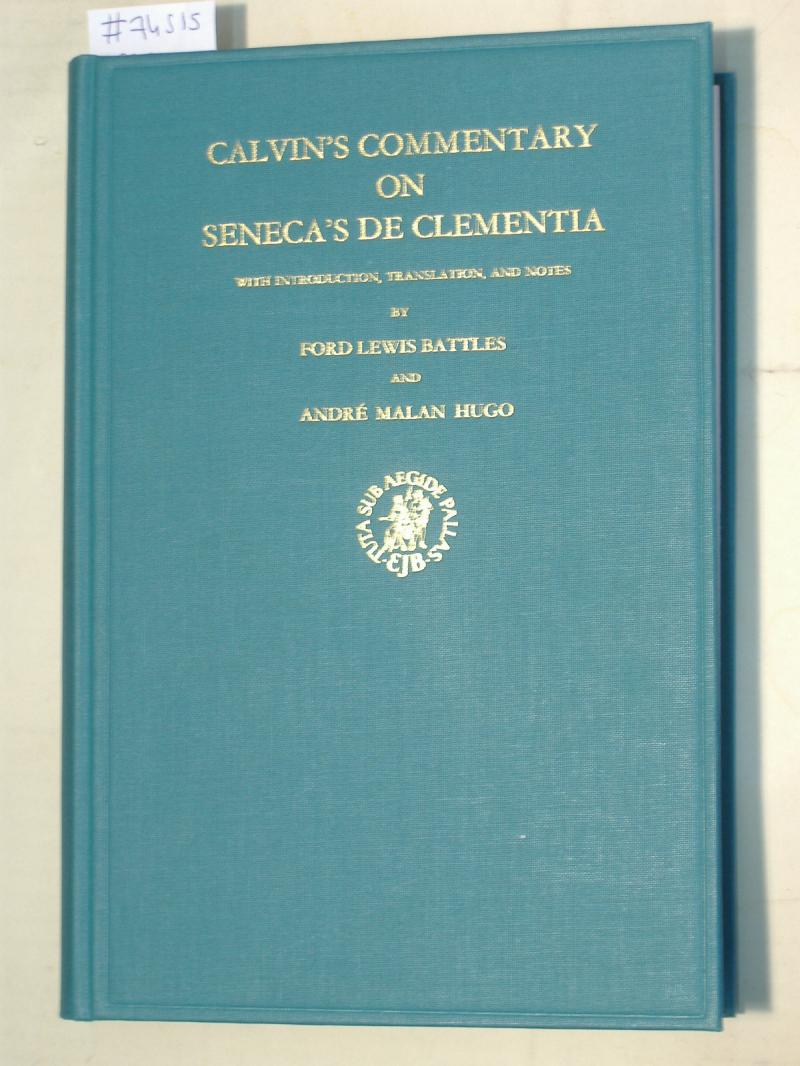
Calvin's Commentary on Seneca's De Clementia -Photo: barnebys.com 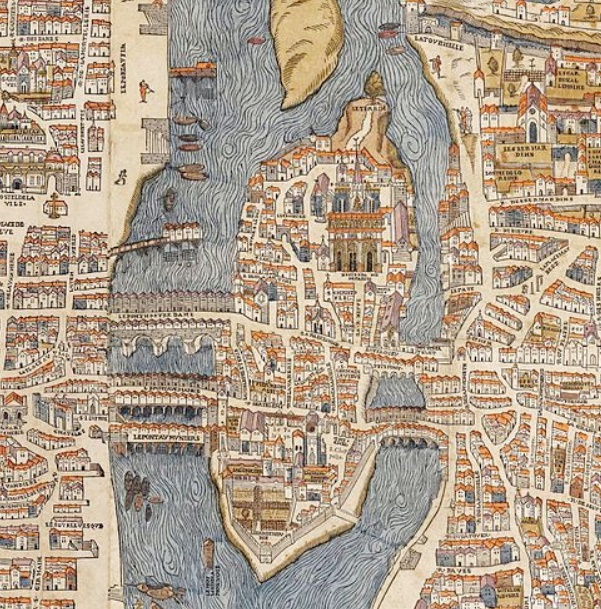
Placards Affair -Photo: thefreelancehistorywriter.com -
One of the interesting facts about John Calvin is that Augustine had a significant influence on him. According to John Calvin, "Augustine is so wholly within me, that if I wished to write a confession of my faith, I could do so with all fullness and satisfaction to myself out of his writings." "This is why one finds that every four pages written in the Institutes of the Christian Religion John Calvin quoted Augustine. Calvin, for this reason, would deem himself not a Calvinist, but an Augustinian. Christian Calvinist, should they be more likely deemed an Augustinian-Calvinist?" As a result, Calvinism, in particular, is frequently referred to as Augustinianism," Cary states.
Calvinism's theology has been immortalized in the acronym TULIP, which stands for Total depravity, Unconditional election, Limited atonement, Irresistible grace, and Perseverance of the saints. These were detailed following Calvin's death in the Second Synod of Dort in 1618-1619 in opposition to the opposing Five Articles of Remonstrance, which followed Jacobus Arminius' doctrine. Modern Reformed theology maintains these five Calvinist ideas as a basic exposition of the soteriological doctrines proclaimed by Calvin and attributed to Augustine.
Calvin developed his theology in his biblical interpretations, sermons, and treatises, but his magnum opus, the Institutes of the Christian Religion, is the most thorough expression of his views. He intended for the book to be read in connection with his commentaries as a summation of his views on Christian theology. The numerous versions of that work spanned virtually his entire reforming career, and the book's subsequent updates reveal that his theology changed very little from his adolescence until his death. The initial edition, published in 1536, had only six chapters. The second version, published in 1539, was three times as long because he included chapters on Melanchthon's Loci Communes. He supplied additional information and expanded a chapter on the Apostles' Creed in 1543. The Institutes were published in their final edition in 1559. The work had grown to four volumes of eighty chapters each, each called after a creed statement: Book 1 on God the Creator, Book 2 on the Redeemer in Christ, Book 3 on receiving Christ's Grace through the Holy Spirit, and Book 4 on the Society of Christ or the Church.
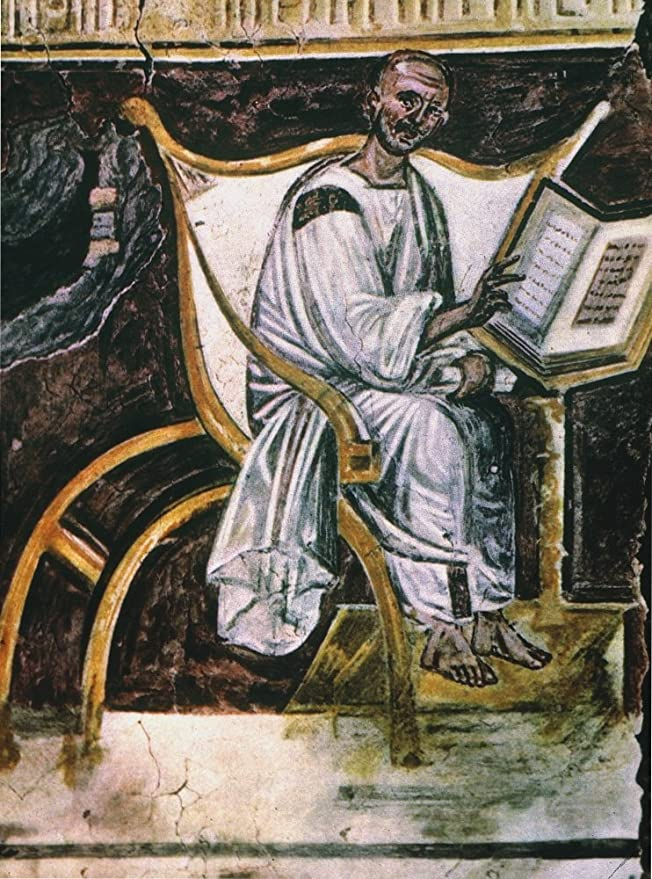
Saint Augustine in a 6th-century fresco, Lateran, Rome -Photo: amazon.com 
Saint Augustine -Photo: recoletosfilipinas.org -
It is a fact that Calvin edited the Institutes of the Christian Religion for nearly his entire career. Calvin developed his theology in his biblical interpretations, sermons, and treatises, but his magnum opus, the Institutes of the Christian Religion, is the most thorough expression of his views. He intended for the book to be read in connection with his commentaries as a summation of his views on Christian theology. The numerous versions of that work spanned virtually his entire reforming career, and the book's subsequent updates reveal that his theology changed very little from his adolescence until his death. The initial edition, published in 1536, had only six chapters. The second version, published in 1539, was three times as long because he included chapters on Melanchthon's Loci Communes. He supplied additional information and expanded a chapter on the Apostles' Creed in 1543. The Institutes were published in their final edition in 1559. The work had grown to four volumes of eighty chapters each, each called after a creed statement: Book 1 on God the Creator, Book 2 on the Redeemer in Christ, Book 3 on receiving Christ's Grace through the Holy Spirit, and Book 4 on the Society of Christ or the Church.
John Calvin's seminal book of systematic theology is Institutes of the Christian Religion (Latin: Institutio Christianae Religionis). It was first published in Latin in 1536 (at the same time as Henry VIII of England's Dissolution of the Monasteries) and in his native French tongue in 1541, with the definitive versions appearing in 1559 (Latin) and 1560 (French). The book was designed as an introductory textbook on the Protestant creed for individuals with some prior understanding of theology, and it addressed a wide range of theological subjects, from church and sacraments doctrines through justification by faith alone and Christian liberty. It vehemently opposed the beliefs of those Calvin regarded as unorthodox, particularly Roman Catholicism, to which Calvin claims he was "deeply dedicated" before his conversion to Protestantism. The Institutes is a primary source for the theology system embraced by the Reformed churches, commonly referred to as Calvinism.
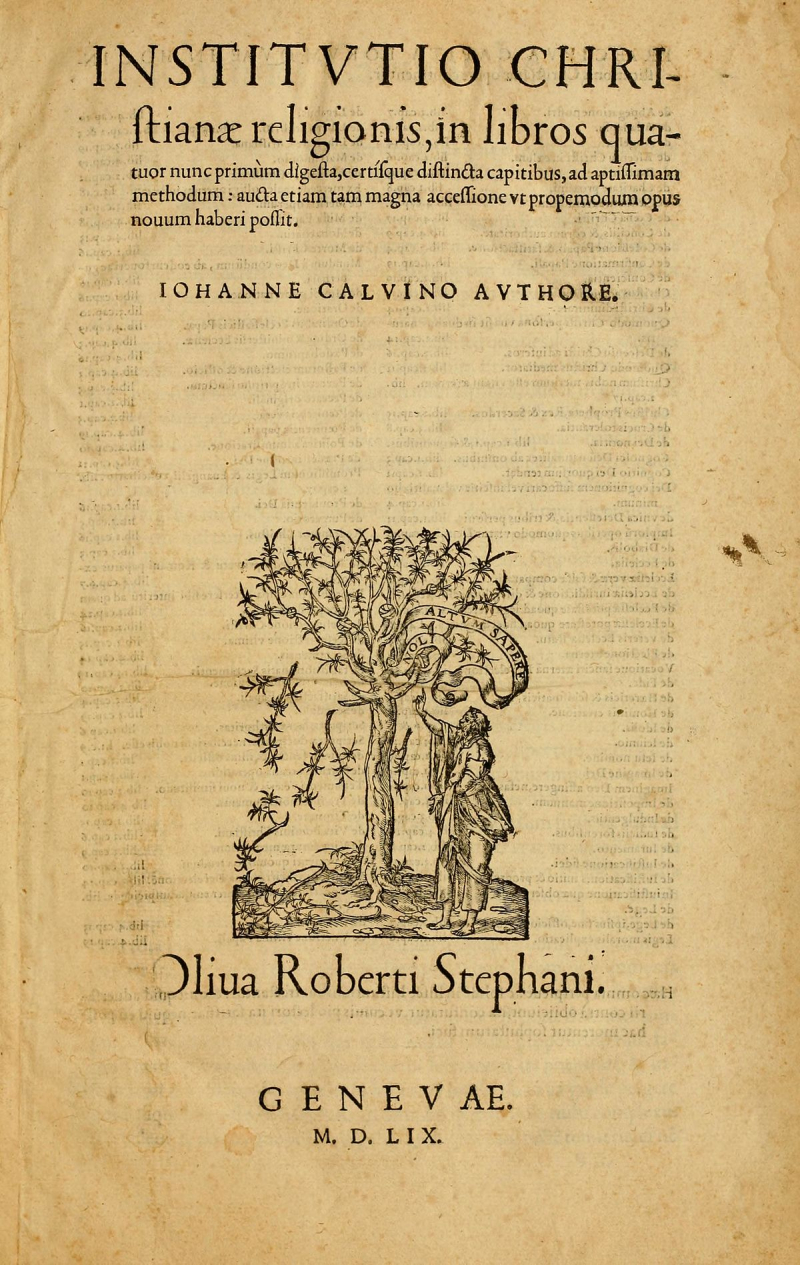
The Institutes of the Christian Religion -Photo: en.wikipedia.org 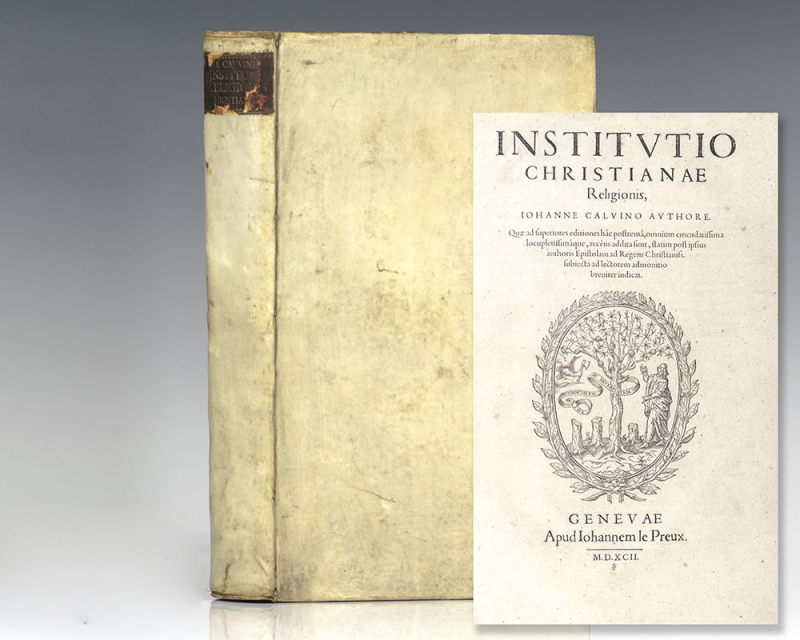
The Institutes of the Christian Religion -Photo: zvab.com · In stock









